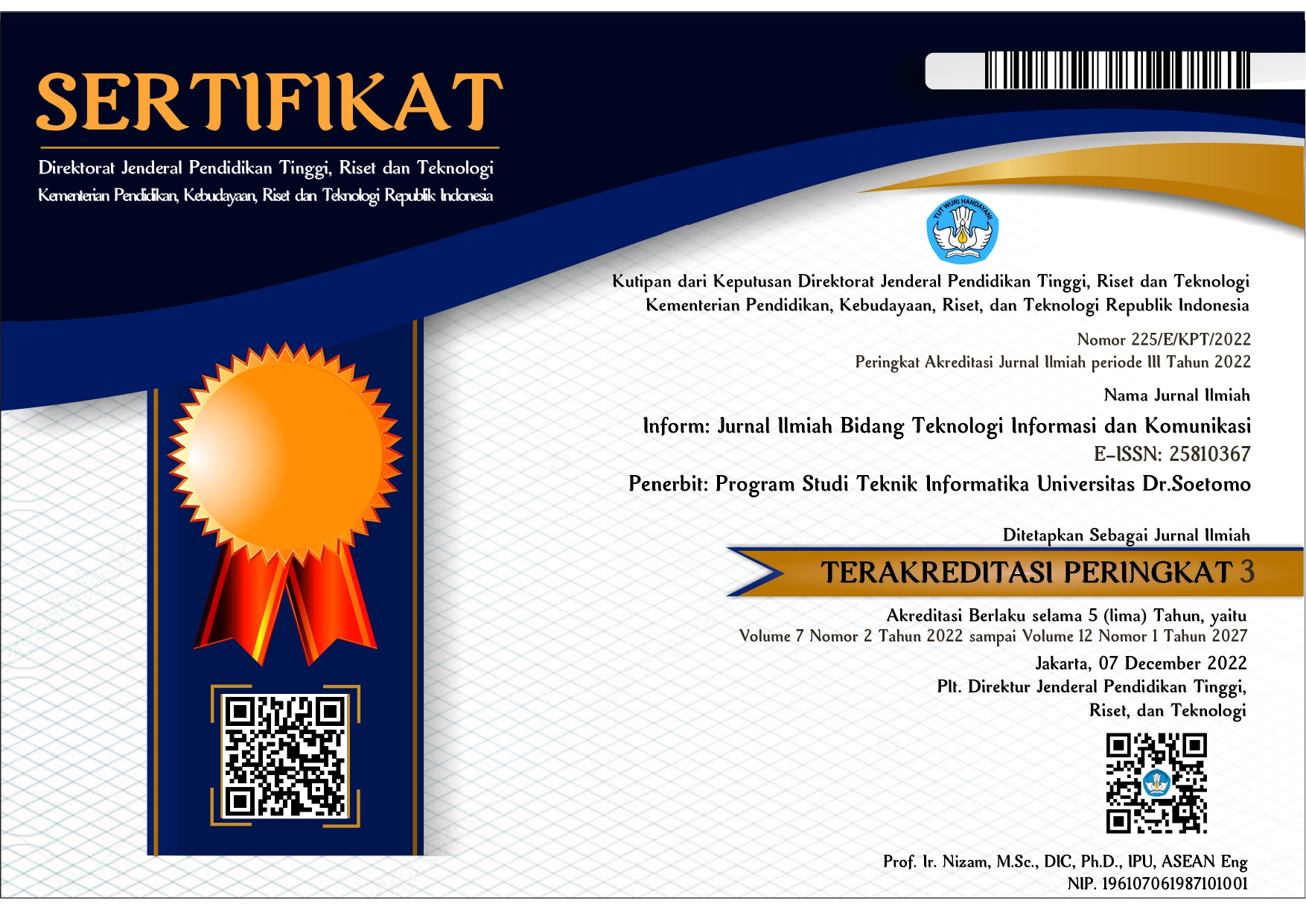Perbandingan Metode Single Linkage, Complete Linkage Dan Average Linkage dalam Pengelompokan Kecamatan Berdasarkan Variabel Jenis Ternak Kabupaten Sidoarjo
 Abstract views: 5133
,
Abstract views: 5133
,
 PDF downloads: 2334
PDF downloads: 2334
Abstract
Livestock products are widely used by the community in their daily lives, for example as food ingredients, industrial material sources, labor resources, fertilizer sources and energy sources. This study aims to cluster livestock potential with data on livestock population in Sidoarjo Regency in 2017 with single linkage, complete linkage and average linkage method and comparing performance of the methods. In this cluster, the data will be grouped into 3 clusters. The results of the three clusters were obtained by sixteen sub-districts in the first cluster with the potential for low livestock and each one in the second and third clusters for single linkage and average linkage. While complete linkage obtained fifteen sub-districts in the first cluster with high potential for livestock, two sub-districts in the second cluster with the potential of medium livestock and one sub-district in the third cluster with the potential for high farm animals. In the comparison of the standard deviation ratio value, the smallest value of 0.222 is obtained by complete linkage, which shows that complete linkage is better than single linkage and average linkage in the case of subgrouping based on Sidoarjo regency livestock types.
References
BPS, Kabupaten Sidoarjo Dalam Angka 2018, 2018th ed. Sidoarjo: BPS Sidoarjo, 2018.
S. Nugroho, Statistika Multivariat Terapan. Bengkulu: UNIB Press Bengkulu, 2008.
S. Ningsih, S. Wahyuningsih, and Y. N. Nasution, “Perbandingan Kinerja Metode Complete Linkage Dan Average Linkage Dalam Menentukan Hasil Analisis Cluster ( Studi Kasus : Produksi Palawija Provinsi Kalimantan Timur 2014 / 2015 ),” vol. 1, no. 1, pp. 46–50, 2016.
Y. Soraya, Perbandingan Kinerja Metode Single Linkage , Metode Complete Linkage Dan Metode K-Means Dalam Analisis Cluster. Semarang: Universitas Negeri Semarang, 2011.
T. Febriana, “Perbandingan kinerja metode,” Yogyakarta, 2014.
A. Sholiha, “Perbandingan Analisis Klaster Menggunakan Metode Single Linkage , Complete Linkage , Average Linkage Dan K-Means Untuk Pengelompokan,” Semarang, 2015.
F. Rizkaini, “Determination Best Method Of Single Linkage Method , Completed Linkage Method And Ward ’ S Method To Classify Districts / Cities In The South Sumatera Province Based On The Case Of Dise ... Penentuan Metode Terbaik Dari Single Linkage Method , Penglastera,” Palembang, 2018.
S. Laeli, “Analisis Cluster dengan Average Linkage Method dan Ward ’ s Method untuk Data Responden Nasabah Asuransi Jiwa Unit Link,” pp. 1–170, 2014.
B. Suharjo, Statistika Terapan disertai contoh aplikasi dengan SPSS. Yogyakarta: Graha Ilmu, 2013.
E. Hartini, “Metode Clustering Hirarki,” Pus. Pengemb. Teknol. Inf. dan Komputasi BATAN, 2014.
J. Supranto, Analisis Multivariat Arti dan Interpretasi. Jakarta: Rineka Cipta, 2010.
R. A. Johnson and D. W. Wichern, Applied Multivariate Statistical Analysis. New Delhi: Prentice-Hall, 2007.
A. R. Barakbah and K. Arai, “Determining Constraints of Moving Variance to Find Global Optimum and Make Automatic Clustering Determining Constraints of Moving Variance to Find Global Optimum and Make Automatic Clustering,” no. October, 2004.
M. Bunkers, J. M. Jr, and A. DeGaetano, “Definition Of Climate Regions In The Nobunkers, M.; Jr, J. M.; Degaetano, A. Definition of climate regions in the Northern Plains using an objective cluster modification technique. Journal of Climate, 1996. Disponível em:
Copyright (c) 2019 Sulthan Fikri Mu'afa, Nurissaidah Ulinnuha

This work is licensed under a Creative Commons Attribution-ShareAlike 4.0 International License.
Authors who publish with Inform: Jurnal Ilmiah Bidang Teknologi Informasi dan Komunikasi agree to the following terms:
-
Authors retain copyright and grant the journal right of first publication with the work simultaneously licensed under a Creative Commons Attribution License (CC BY-SA 4.0) that allows others to share the work with an acknowledgment of the work's authorship and initial publication in this journal.
-
Authors are able to enter into separate, additional contractual arrangements for the non-exclusive distribution of the journal's published version of the work (e.g., post it to an institutional repository or publish it in a book), with an acknowledgment of its initial publication in this journal.
-
Authors are permitted and encouraged to post their work online (e.g., in institutional repositories or on their website) prior to and during the submission process, as it can lead to productive exchanges, as well as earlier and greater citation of published work.












